
Saskatchewan is a prairie and boreal province in Western Canada, the middle of the three prairie provinces. Nearly 10% of Saskatchewan’s total area of 651,900 square kilometres (251,700 sq mi) is fresh water, which is composed mostly of rivers, reservoirs, and the province's 100,000 lakes. English is the primary language of the province, with 82.4% of Saskatchewanians speaking English as their first language.
ATB Financial is a financial institution and Crown corporation wholly owned by the Province of Alberta. Originally established as Alberta Treasury Branches in 1938, ATB Financial operates primarily in Alberta and provides financial services to over 770,000 Alberta residents and businesses. Headquartered in Edmonton, ATB has over 170 branches and over 140 agencies serving over 240 communities in Alberta. Wealth management services are offered by ATB Wealth.

Melfort is a city in Saskatchewan, Canada, located approximately 95 km (59 mi) southeast of Prince Albert, 172 km (107 mi) northeast of Saskatoon and 280 km (170 mi) north of Regina.

Indian Head is a town in southeast Saskatchewan, Canada, 69 kilometres (43 mi) east of Regina on the Trans-Canada Highway. It "had its beginnings in 1882 as the first settlers, mainly of Scottish origin, pushed into the area in advance of the railroad, most traveling by ox-cart from Brandon." "Indian" refers to Aboriginal Canadians. The town is known for its federally operated experimental farm and tree nursery, which has produced and distributed seedlings for shelter belts since 1901. For many years the program was run by the Prairie Farm Rehabilitation Administration (PFRA).
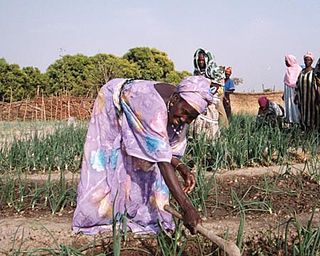
An agricultural cooperative, also known as a farmers' co-op, is a cooperative in which farmers pool their resources in certain areas of activity.

The Central Experimental Farm (CEF), commonly known as the Experimental Farm, is an agricultural facility, working farm, and research centre of the Science and Technology Branch, formerly the Research Branch, of Agriculture and Agri-Food Canada. As the name indicates, this farm is centrally located in and now surrounded by the City of Ottawa, Ontario, Canada. The 4 square kilometres (1.5 sq mi) farm is a National Historic Site of Canada and most buildings are protected and preserved as heritage buildings.
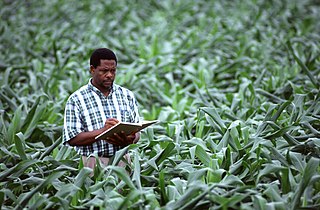
An agriculturist, agriculturalist, agrologist or agronomist, is a professional in the science, practice, and management of agriculture and agribusiness. It is a regulated profession in Canada, the Philippines, and the United States. Other names used to designate the profession include agricultural scientist, agricultural manager, agricultural planner, or agriculture researcher.

Canada is one of the largest agricultural producers and exporters in the world. As with other developed nations, the proportion of the population and GDP fell dramatically over the 20th century but it remains an important element of the Canadian economy. A wide range of agriculture is practised in Canada, from sprawling wheat fields of the prairies to summer produce of the Okanagan valley. In the federal government, overview of Canadian agriculture is the responsibility of the Department of Agriculture and Agri-Food.
Regina is a city in Saskatchewan, Canada. Its industry was originally largely confined to activities associated with its agricultural hinterland. Oil and natural gas, potash, kaolin, sodium sulphite and bentonite contribute a great part of the economy of Regina, and the surrounding area. The farm and agricultural component is still a significant part of the economy, but it is no longer the prime driver of the economy; provincially it has slipped to eighth overall, well behind the natural resources sectors. The Innovation Place Research Park near the University of Regina hosts several science and technology companies.
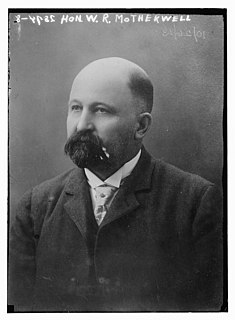
William Richard Motherwell, was a Canadian politician serving at both the Saskatchewan Legislative Assembly and the Canadian Parliament. He served as Agriculture Minister for both levels of government during his career.

The Motherwell Homestead is a National Historic Site of Canada located just south of the community of Abernethy, Saskatchewan. The site commemorates the life and achievements of William Richard Motherwell, Saskatchewan's first minister of agriculture and federal minister of agriculture for the Mackenzie King government.
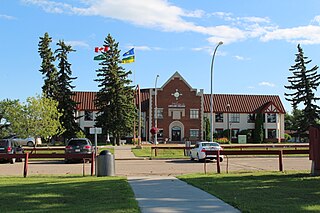
Lakeland College is a post-secondary college in Alberta, Canada. It is publicly funded, and maintains two campuses in Vermilion and Lloydminster. Lakeland serves over 7,000 students through the academic year with 2,223 studying full- and part-time.
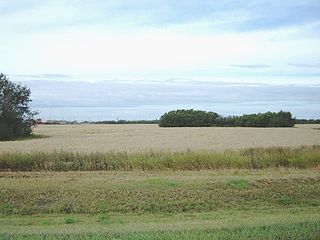
Agriculture in Saskatchewan is the production of various food, feed, or fiber commodities to fulfill domestic and international human and animal sustenance needs. The newest agricultural economy to be developed in renewable biofuel production or agricultural biomass which is marketed as ethanol or biodiesel. Plant cultivation and livestock production have abandoned subsistence agricultural practices in favor of intensive technological farming resulting in cash crops which contribute to the economy of Saskatchewan. The particular commodity produced is dependent upon its particular biogeography or ecozone of Geography of Saskatchewan. Agricultural techniques and activities have evolved over the years. The first nation nomadic hunter-gatherer lifestyle and the early immigrant ox and plow farmer proving up on his quarter section of land in no way resemble the present farmer operating huge amounts of land or livestock with their attendant technological mechanization. Challenges to the future of Saskatchewan agriculture include developing sustainable water management strategies for a cyclical drought prone climate in south western Saskatchewan, updating dryland farming techniques, stabilizing organic definitions or protocols and the decision to grow, or not to grow genetically modified foods. Domestically and internationally, some commodities have faced increased scrutiny from disease and the ensuing marketing issues.

University of Saskatchewan has over 200 academic programs on its Saskatoon, Saskatchewan campus, and is internationally known for its teaching and research. The on-campus synchrotron Canadian Light Source makes it the only Canadian institution for such nuclear and biotechnology research. Canadian Light Source nuclear research facility provides research and analysis of the internal structures of advanced materials and biological samples. The College of Arts and Science is the largest of the U of S and comprises five separate health science fields in addition to numerous other programs in the Arts, Social Sciences, Humanities, and Natural Sciences. The Department of Computer Science as well as the College of Engineering are ranked highly within their fields. The founding college, the College of Agriculture, is still providing agricultural breakthroughs which are utilized worldwide.

Francis Hedley Auld, OBE was a Canadian agricultural scientist who served as Saskatchewan's Deputy Minister of Agriculture from 1916 to 1946.
Crown corporations in Canada are government organizations with a mixture of commercial and public-policy objectives. They are directly and wholly owned by the Crown.

The Ministry of Highways is divided into the Operations, Policy and Programs, and Corporate Services Divisions and the Communications Branch. The ministry is the employer of over 1,476 employees diversified amongst 105 communities in Saskatchewan. The current Minister of Highways and Infrastructure is Fred Bradshaw.
The economy of Saskatchewan has been associated with agriculture resulting in the moniker "Bread Basket of Canada" and Bread Basket of the World. According to the Government of Saskatchewan, approximately 95% of all items produced in Saskatchewan, depend on the basic resources available within the province. Various grains, livestock, oil and gas, potash, uranium, wood and their spin off industries fuel the economy.

The Better Farming Train was an agriculture demonstration train which toured Saskatchewan, Canada, between 1914 and 1922.
The Canadian Census of Agriculture, is a census conducted every five years by Statistics Canada, alongside the national census, for the purposes of gathering Canadian agricultural industry, farm operator, and farm data.















